Visitors
Accordion example
2023
February 2023
 Pofessor Uwe Thiele, Institute of Theoretical Physics, Westfälische Wilhelms-Universität Münster, Münster, Germany. The purpose of Uwe's visit was to discuss about stability theory and thin films in the presence of complexities, such as active media, evaporation, elastic and adaptive structures and singularity formulation.
Pofessor Uwe Thiele, Institute of Theoretical Physics, Westfälische Wilhelms-Universität Münster, Münster, Germany. The purpose of Uwe's visit was to discuss about stability theory and thin films in the presence of complexities, such as active media, evaporation, elastic and adaptive structures and singularity formulation.
2018
October 2018
 Dr Jim Lutsko, Center for Nonlinear Phenomena and Complex Systems, Department of Physics, Université Libre de Bruxelles, Brussels, Belgium. The purpose of Jim's visit was related to the projects: “Nucleation pathways”, “Köhler theory for cloud formation”.
Dr Jim Lutsko, Center for Nonlinear Phenomena and Complex Systems, Department of Physics, Université Libre de Bruxelles, Brussels, Belgium. The purpose of Jim's visit was related to the projects: “Nucleation pathways”, “Köhler theory for cloud formation”.
February 2018
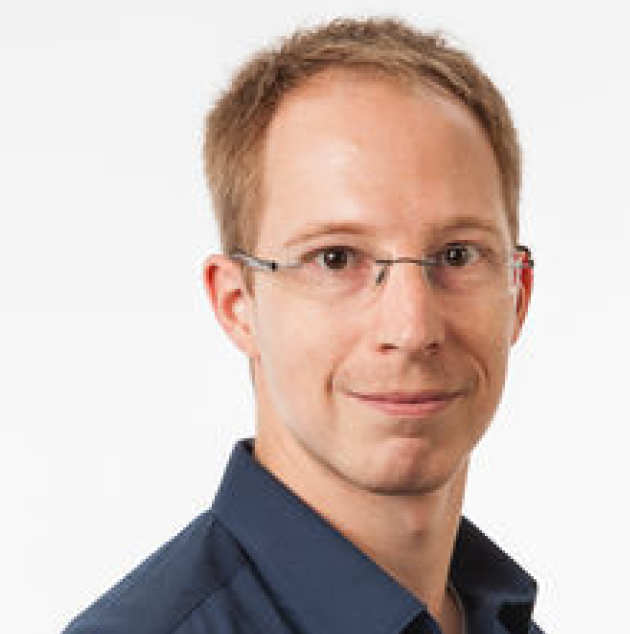 Dr Remco Hartkamp, Assistant Professor at Delft University of Technology (TU Delft). Remco visited our group and gave us a seminar entitled "Molecular Modelling of Electric Double Layers at the Silica Surface".
Dr Remco Hartkamp, Assistant Professor at Delft University of Technology (TU Delft). Remco visited our group and gave us a seminar entitled "Molecular Modelling of Electric Double Layers at the Silica Surface".
2017
December 2017
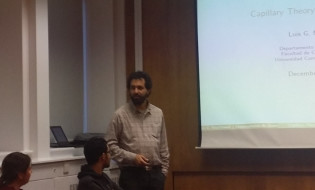 Professor Luis G. MacDowell, Professor of Chemical Physics at Universidad Complutense de Madrid. Luis visited our group and gave us a seminar entitled "Capillarity Theory at the Nanoscale".
Professor Luis G. MacDowell, Professor of Chemical Physics at Universidad Complutense de Madrid. Luis visited our group and gave us a seminar entitled "Capillarity Theory at the Nanoscale".
July 2017
 Professor Edgar Knobloch, Department of Physics, University of California at Berkeley. The purpose of Edgar's visit was related to the projects: “Nucleation theory within the context of fluctuating phase-field crystal (PFC)/Swift-Hohenberg (SH) and phenomenological description of mesoscopic clusters with PFC/SH models: extension of PFC/SH models to include noise, most-likely path for nucleation, snaking out of the nucleation regions; Density-functional theory study of localised states in a confined fluid; Dynamic transitions due to tilted washboard potential.”
Professor Edgar Knobloch, Department of Physics, University of California at Berkeley. The purpose of Edgar's visit was related to the projects: “Nucleation theory within the context of fluctuating phase-field crystal (PFC)/Swift-Hohenberg (SH) and phenomenological description of mesoscopic clusters with PFC/SH models: extension of PFC/SH models to include noise, most-likely path for nucleation, snaking out of the nucleation regions; Density-functional theory study of localised states in a confined fluid; Dynamic transitions due to tilted washboard potential.”
April 2017
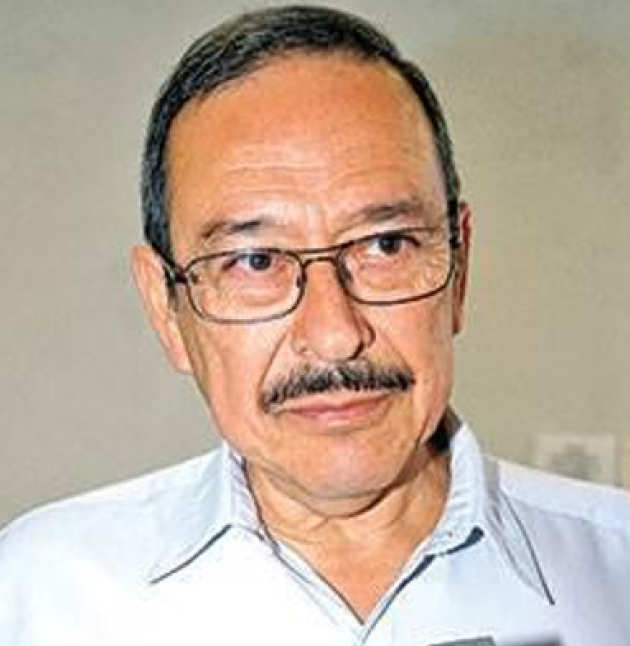 Professor Magdaleno Medina-Noyola, Research Professor of Physics at Autonomous University of San Luis Potosi. Magdaleno gave us a talk entitled "Physical gels, porous glasses and the glass transition". The format was informal and the presentation was aimed at establishing possible connections between his work on non-equilibrium thermodynamics and our particular view on phase transitions and statistical mechanics.
Professor Magdaleno Medina-Noyola, Research Professor of Physics at Autonomous University of San Luis Potosi. Magdaleno gave us a talk entitled "Physical gels, porous glasses and the glass transition". The format was informal and the presentation was aimed at establishing possible connections between his work on non-equilibrium thermodynamics and our particular view on phase transitions and statistical mechanics.
March 2017
 Professor Vasilis Bontozoglou, Department of Mechanical Engineering, University of Thessaly, Volos, Greece. The purpose of Vasilis' visit was related to the projects: “Flows in confinement; Interfacial flows.”
Professor Vasilis Bontozoglou, Department of Mechanical Engineering, University of Thessaly, Volos, Greece. The purpose of Vasilis' visit was related to the projects: “Flows in confinement; Interfacial flows.”
 Dr Jim Lutsko, Center for Nonlinear Phenomena and Complex Systems, Department of Physics, Université Libre de Bruxelles, Brussels, Belgium. The purpose of Jim's visit was related to the projects: “Nucleation pathways”, “Köhler theory for cloud formation” and “Noisy dynamical density functional theory”.
Dr Jim Lutsko, Center for Nonlinear Phenomena and Complex Systems, Department of Physics, Université Libre de Bruxelles, Brussels, Belgium. The purpose of Jim's visit was related to the projects: “Nucleation pathways”, “Köhler theory for cloud formation” and “Noisy dynamical density functional theory”.
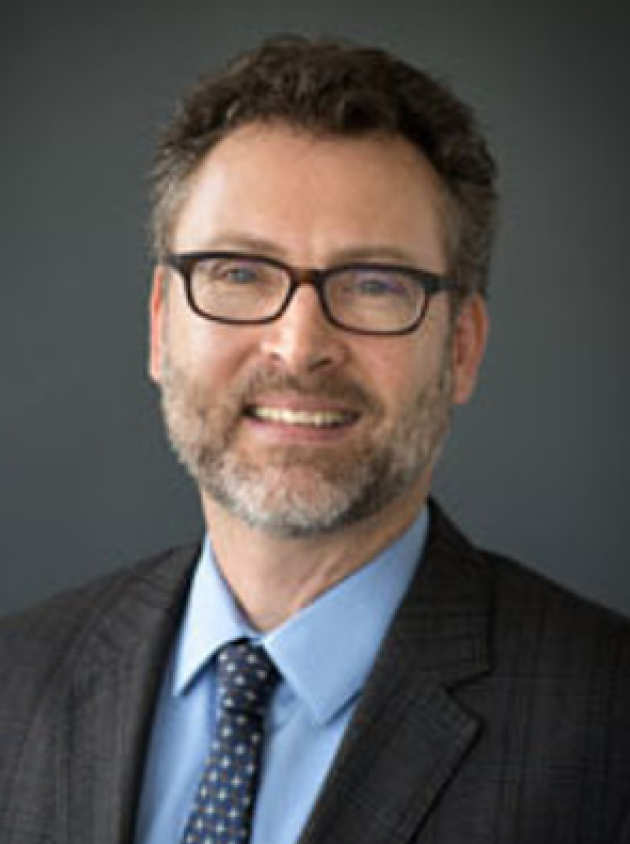 Professor Michael D. Graham, Professor of Chemical and Biological Engineering at University of Wisconsin-Madison, visited the Departments of Chemical Engineering, Mathematics and Aeronautics at Imperial College. His visit was accompanied by a seminar entitled "Theory of margination in blood and other multicomponent suspensions".
Professor Michael D. Graham, Professor of Chemical and Biological Engineering at University of Wisconsin-Madison, visited the Departments of Chemical Engineering, Mathematics and Aeronautics at Imperial College. His visit was accompanied by a seminar entitled "Theory of margination in blood and other multicomponent suspensions".
Blood is a suspension of objects of various shapes, sizes and mechanical properties, whose distribution during flow is important in many contexts. Red blood cells tend to migrate toward the center of a blood vessel, leaving a cell-free layer at the vessel wall, while white blood cells and platelets are preferentially found near the walls, a phenomenon called margination that is critical for the physiological responses of inflammation and hemostasis. Additionally, drug delivery particles in the bloodstream also undergo margination – the influence of these phenomena on the efficacy of such particles is unknown.
In this talk a mechanistic theory is developed to describe segregation in blood and other confined multicomponent suspensions. It incorporates the two key phenomena arising in these systems at low Reynolds number: hydrodynamic pair collisions and wall-induced migration. The theory predicts that the cell-free layer thickness follows a master curve relating it in a specific way to confinement ratio and volume fraction. Results from experiments and detailed simulations with different parameters (flexibility of different components in the suspension, viscosity ratio, confinement, among others) collapse onto the same curve. In simple shear flow, several regimes of segregation arise, depending on the value of a ``margination parameter'' M. Most importantly, there is a critical value of M below which a sharp ``drainage transition'' occurs: one component is completely depleted from the bulk flow to the vicinity of the walls. Direct simulations also exhibit this transition as the size or flexibility ratio of the components changes. Results are presented for both Couette and plane Poiseuille flow. Experiments performed in the laboratory of Wilbur Lam indicate the physiological and clinical importance of these observations.
2016
December 2016
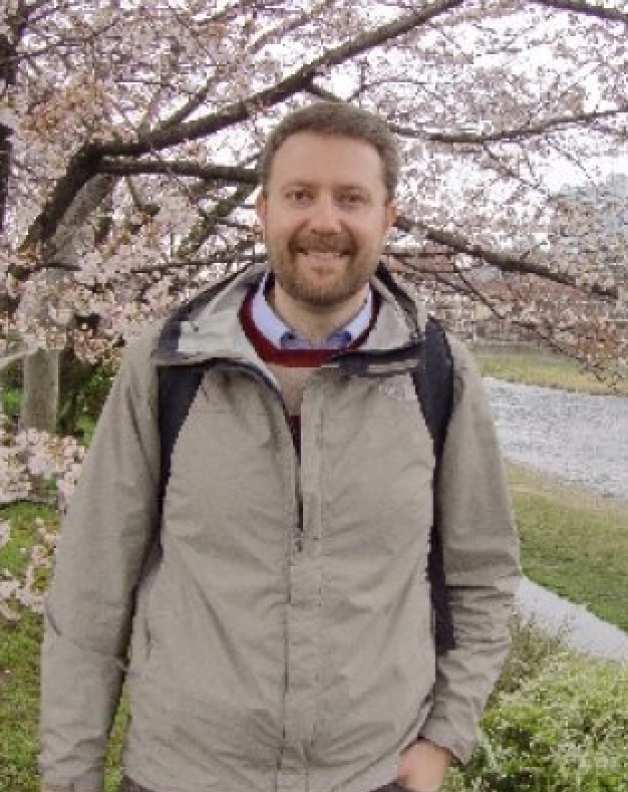 Professor Pietro Asinari, Professor of Multiscale Modeling at Politecnico di Torino, visited our group and gave us a seminar entitled "Investigating the molecular behaviour of water in nanostructures for thermal storage and separation".
Professor Pietro Asinari, Professor of Multiscale Modeling at Politecnico di Torino, visited our group and gave us a seminar entitled "Investigating the molecular behaviour of water in nanostructures for thermal storage and separation".
When water is confined in nanostructures, or forced to pass thorough them, it reveals some peculiar behaviour due to its underlying molecular nature. Taking into account such effect may be problematic, but it offers also novel opportunities [1]. In this talk, I will discuss two examples based on zeolites. First of all, we will investigate the possibility to use zeolites for thermal storage. I will present a hybrid (molecular dynamical + Monte Carlo) numerical approach, validated against experimental data from literature, for predicting both adsorption and infiltration isotherms of zeolite-water pairs. The approach is general and it can be used for other pairs as well. Adsorption isotherm data are critical for designing optimal sorption heat storage cycles [2]. Secondly, I will present the challenges for molecular separation by zeolite-based membranes. Infiltration isotherms are essential for assessing the performances of molecular sieve for next-future desalination (or other separation) processes. Numerical evidences show that a simple Dubinin-Astakhov model can be safely used (and physically interpreted) for describing the infiltration process. However, from the practical point of view, the role of surface barriers remains elusive [3].
References:
- E. Chiavazzo, M. Fasano, P. Asinari, P. Decuzzi. Scaling behaviour for the water transport in nanoconfined geometries. Nature Communications 5, 3565 (2014)
- M. Fasano, D. Borri, E. Chiavazzo, P. Asinari. Protocols for atomistic modeling of water uptake into zeolite crystals for thermal storage and other applications. Applied Thermal Engineering 101, 762-769 (2016)
- M. Fasano, T. Humplik, A. Bevilacqua, M. Tsapatsis, E. Chiavazzo, E. Wang, P. Asinari. Interplay between hydrophilicity and surface barriers on water transport in zeolite membranes. Nature Communications 7, 12762 (2016)
August 2016
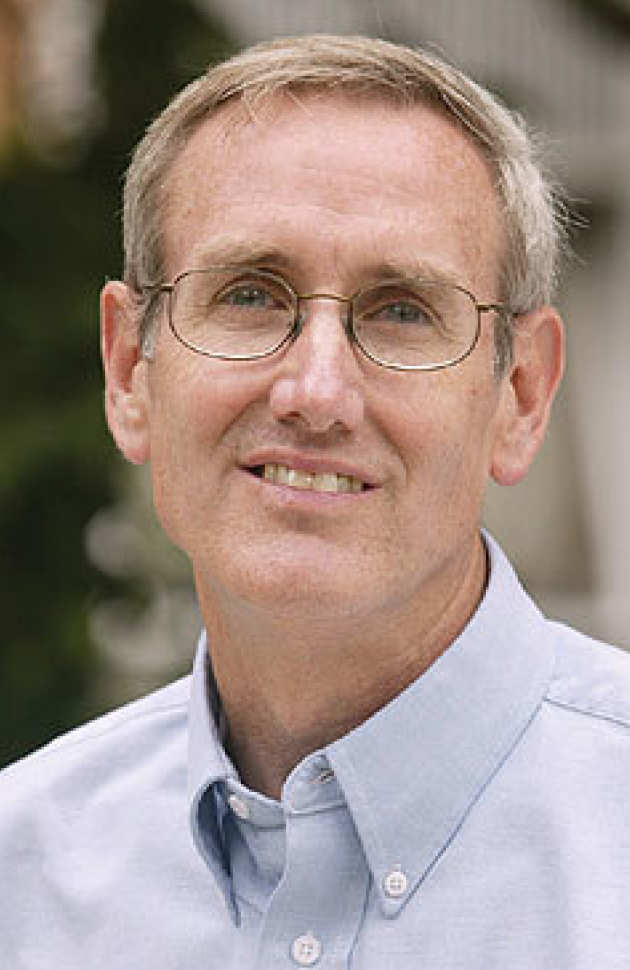 Professor Jay Benziger, Professor of Chemical and Biological Engineering at Princeton University, visited our group and gave us a seminar entitled "Fan the Flame with Water: Operation of PEM Fuel Cells with Dry Feeds".
Professor Jay Benziger, Professor of Chemical and Biological Engineering at Princeton University, visited our group and gave us a seminar entitled "Fan the Flame with Water: Operation of PEM Fuel Cells with Dry Feeds".
Water management is a major technological problem with Polymer Electrolyte Membrane (PEM) Fuel Cells. Bad performance is seen with membranes operating at low relative humidity or with liquid water flooding the fuel cell. Employing model fuel cell reactors that elucidate the basic physics of Polymer Electrolyte Membrane (PEM) fuel cell reactors we have been able to demonstrate that the water produced at the cathode can auto- humidify the fuel cell and operate with dry feeds to 130°C. PEM fuel cells reactors are shown to be conceptually identical to exothermic reactions, e.g. flames!
Model fuel cells are employed to elucidate the mechanism of liquid water motion through the PEM fuel cell. Water slugs and drops form in the gas flow channels of fuel cells giving rise to spatial-temporal current density fluctuations. The current fluctuations were reduced by redesigning the flow channels to exploit gravity to assist in water drainage. Water emerging from the porous electrode grows into drops that eventually occlude the open area of the channel. Drops detach and move when the force for gas flow through the porous electrode is greater than the force to advance the solid/liquid contact lines of the drop. The shape and surface properties of the flow channel can be engineered to minimize blockage effects of drops and slugs. In this talk, we shall demonstrate the use of reaction engineering principles to improve PEM fuel cell design.
June 2016
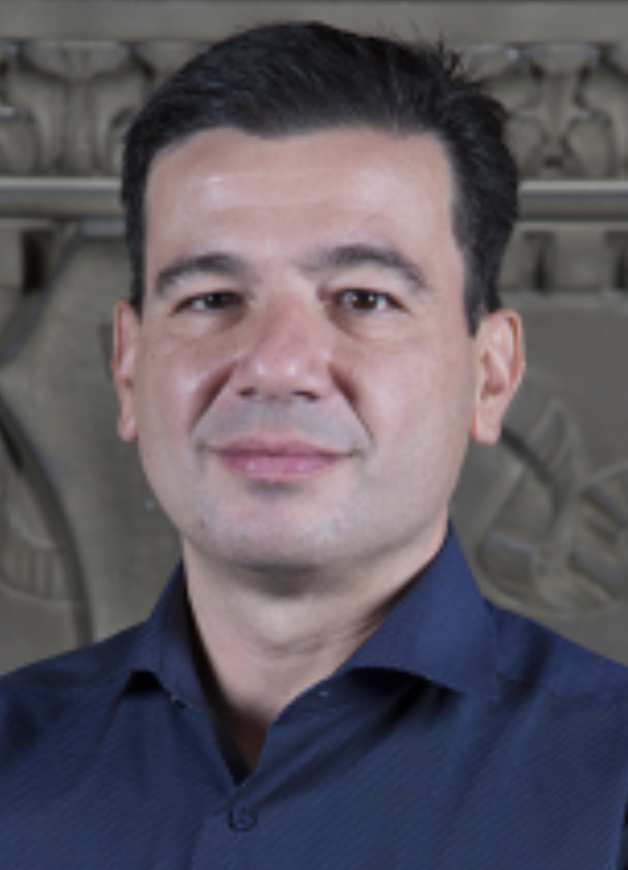 Professor Yiannis Kaznessis, Professor and Director of Graduate Studies in Chemical Engineering at the University of Minnesota, USA during his visit. Currently, founder and CEO of AgThera, visited our group and gave us a seminar entitled "Advances in numerical and analytic approaches for the study of non-spatial stochastic dynamical systems in molecular biology".
Professor Yiannis Kaznessis, Professor and Director of Graduate Studies in Chemical Engineering at the University of Minnesota, USA during his visit. Currently, founder and CEO of AgThera, visited our group and gave us a seminar entitled "Advances in numerical and analytic approaches for the study of non-spatial stochastic dynamical systems in molecular biology".
Stochasticity is a defining feature of biochemical reaction networks, with molecular fluctuations influencing cell physiology. In principle, master probability equations completely govern the dynamic and steady state behavior of stochastic reaction networks. In practice, a solution had been elusive for decades, when there are second or higher order reactions. A large community of scientists has then reverted to merely sampling the probability distribution of biological networks with stochastic simulation algorithms. Consequently, master equations, for all their promise, have not inspired biological discovery.
We recently presented a closure scheme that solves chemical master equations of nonlinear reaction networks [1]. The zero-information closure (ZI-closure) scheme is founded on the observation that although higher order probability moments are not numerically negligible, they contain little information to reconstruct the master probability [2]. Higher order moments are then related to lower order ones by maximizing the entropy of the network. Using several examples, we show that moment-closure techniques may afford the quick and accurate calculation of steady-state distributions of arbitrary reaction networks.
With the ZI-closure scheme, the stability of the systems around steady states can be quantitatively assessed computing eigenvalues of the moment Jacobian. This is analogous to Lyapunov’s stability analysis of deterministic dynamics and it paves the way for a stability theory and the design of controllers of stochastic reacting systems.
In this seminar, we will present the ZI-closure scheme, the calculation of steady-state probability distributions, and discuss the stability of stochastic systems.
- Smadbeck P, Kaznessis YN. A closure scheme for chemical master equations, Proc. Natl. Acad. Sci. USA, 110(35):14261-5, 2013.
- Smadbeck P, Kaznessis YN. Efficient moment matrix generation for arbitrary chemical networks, Chem. Eng. Sci., 84:612–618, 2012.
 Prof. Yannis G. Kevrekidis, Department of Chemical & Biological Engineering and Program in Applied and Computational Mathematics (PACM), Princeton University, Princeton, USA during his visit. Currently, Professor in the departments of Chemical and Biomolecular Engineering and Applied Mathematics and Statistics and in the School of Medicine’s Department of Urology, Johns Hopkins University, Baltimore, Maryland, USA. The purpose of Yannis' visit was related to the projects: “Stick-slip motion and hysteresis behavior of droplets with dynamic volume variation”, “Equation-free modeling of diffusion in a multiscale potential”.
Prof. Yannis G. Kevrekidis, Department of Chemical & Biological Engineering and Program in Applied and Computational Mathematics (PACM), Princeton University, Princeton, USA during his visit. Currently, Professor in the departments of Chemical and Biomolecular Engineering and Applied Mathematics and Statistics and in the School of Medicine’s Department of Urology, Johns Hopkins University, Baltimore, Maryland, USA. The purpose of Yannis' visit was related to the projects: “Stick-slip motion and hysteresis behavior of droplets with dynamic volume variation”, “Equation-free modeling of diffusion in a multiscale potential”.
May-June 2016
 Professor John Tsamopoulos, Department of Chemical Engineering and Computational Fluid Dynamics Laboratory, University of Patras, Greece. The purpose of John's visit was related to the project: “Non-Newtonian and viscoelastic flows”. His visit was funded by Imperial College London (Chemical Engineering and Mathematics-Nelder Fellowship).
Professor John Tsamopoulos, Department of Chemical Engineering and Computational Fluid Dynamics Laboratory, University of Patras, Greece. The purpose of John's visit was related to the project: “Non-Newtonian and viscoelastic flows”. His visit was funded by Imperial College London (Chemical Engineering and Mathematics-Nelder Fellowship).
March 2016
 Professor Ignacio Pagonabarraga, Professor of Condensed Matter Physics at the University of Barcelona and Director at CECAM in Lausanne, visited our group and gave us a seminar entitled "Does confinement hinder transport?".
Professor Ignacio Pagonabarraga, Professor of Condensed Matter Physics at the University of Barcelona and Director at CECAM in Lausanne, visited our group and gave us a seminar entitled "Does confinement hinder transport?".
Spatial confinement has a strong impact in the motion of liquids and suspensions. Although the presence of solid surfaces hinders, in first instance, the motion of a nearby fluid and its suspended particles, the specific coupling of the fluid and the solid can give rise to a rich variety of scenarios. In this talk I will discuss the interplay between geometrical confinement and the motion of self-propelled particles as well as actuated colloids forced externally. I will address different theoretical and computational approaches that provide flexible frameworks to gain insight in the behaviour of such complex scenarios and the new concepts that are useful to quantify the interplay between geometrical variability and particle transport.
 Dr Jim Lutsko, Center for Nonlinear Phenomena and Complex Systems, Department of Physics, Université Libre de Bruxelles, Brussels, Belgium. The purpose of Jim's visit was related to the projects: “New framework for non-equilibrium hydrodynamics/from Wasserstein flows to L2 gradient flows”, “Fluctuating hydrodynamics/strong noise in Dean’s equation”, “nucleation paths/heterogeneous nucleation/comparison with MD simulations”, “Köhler theory for cloud formation”, “Noisy dynamical density functional theory”.
Dr Jim Lutsko, Center for Nonlinear Phenomena and Complex Systems, Department of Physics, Université Libre de Bruxelles, Brussels, Belgium. The purpose of Jim's visit was related to the projects: “New framework for non-equilibrium hydrodynamics/from Wasserstein flows to L2 gradient flows”, “Fluctuating hydrodynamics/strong noise in Dean’s equation”, “nucleation paths/heterogeneous nucleation/comparison with MD simulations”, “Köhler theory for cloud formation”, “Noisy dynamical density functional theory”.
 Prof. Johannes Zimmer, Department of Mathematical Sciences, University of Bath, UK during his visit. Currently, Department of Mathematics, Technische Universität München, Germany. The purpose of Johannes' visit was related to the projects: “New framework for non-equilibrium hydrodynamics/from Wasserstein flows to L2 gradient flows”, “Fluctuating hydrodynamics/strong noise in Dean’s equation”, “nucleation paths/heterogeneous nucleation/comparison with MD simulations”.
Prof. Johannes Zimmer, Department of Mathematical Sciences, University of Bath, UK during his visit. Currently, Department of Mathematics, Technische Universität München, Germany. The purpose of Johannes' visit was related to the projects: “New framework for non-equilibrium hydrodynamics/from Wasserstein flows to L2 gradient flows”, “Fluctuating hydrodynamics/strong noise in Dean’s equation”, “nucleation paths/heterogeneous nucleation/comparison with MD simulations”.
 Dr. Celia Reina, Department of Mechanical Engineering and Applied Mechanics, University of Pennsylvania, Philadelphia, USA. The purpose of Celia's visit was related to the projects: “New framework for non-equilibrium hydrodynamics/from Wasserstein flows to L2 gradient flows”, “Fluctuating hydrodynamics/strong noise in Dean’s equation”, “nucleation paths/heterogeneous nucleation/comparison with MD simulations”.
Dr. Celia Reina, Department of Mechanical Engineering and Applied Mechanics, University of Pennsylvania, Philadelphia, USA. The purpose of Celia's visit was related to the projects: “New framework for non-equilibrium hydrodynamics/from Wasserstein flows to L2 gradient flows”, “Fluctuating hydrodynamics/strong noise in Dean’s equation”, “nucleation paths/heterogeneous nucleation/comparison with MD simulations”.
January 2016
 Professor Eugene Benilov, Department of Mathematics, University of Limerick, visited our group for the month of January and gave us a seminar entitled "A new model for gas–liquid phase transitions".
Professor Eugene Benilov, Department of Mathematics, University of Limerick, visited our group for the month of January and gave us a seminar entitled "A new model for gas–liquid phase transitions".
We examine a diluted gas with inter-molecular attraction. It is argued that the attraction force amplifies random density fluctuations by pulling molecules from lower-density regions into high-density regions and, thus, may give rise to an instability. Using a kinetic equation with the attraction force taken into account under the approximation of self-consistent field, we demonstrate that the instability occurs when the temperature T is lower than a certain threshold value Ts depending on the gas density. It is further shown that, even if T is only marginally lower than Ts, the instability generates ‘clusters’ with density much higher than that of the gas. These results suggest that the instability should be interpreted as a gas–liquid phase transition, with Ts being the temperature of saturated steam and the high-density clusters representing liquid droplets.
January 2016
 Professor Aurora Hernández-Machado, Faculty of Physics, University of Barcelona, visited our group and gave us a seminar entitled "Roughness and wetting at microscales".
Professor Aurora Hernández-Machado, Faculty of Physics, University of Barcelona, visited our group and gave us a seminar entitled "Roughness and wetting at microscales".
Controlling the advancement of a fluid inside a microchannel is one of the main issues in microfluidics. At ever smaller scales the surface to volume ratio becomes increasingly large and system frontiers play a crucial role. In this situation surface properties of the microchannel, such as roughness and wetting, are of fundamental importance since they would largely determine the large resistance to flow. We will discuss properties of fluid front advancement in a microchannel with natural roughness, such as pinning and avalanches. We will also describe wetting-induced fluid entrainment by advancing contact lines on surfaces. A new phenomenon that we dub superconfinement will be present.
2015
December 2015 & September 2015
 Prof. Yannis G. Kevrekidis, Department of Chemical and Biomolecular Engineering & Department of Applied Mathematics and Statistics, Whiting School of Engineering, Johns Hopkins University, Baltimore, Maryland, USA. The purpose of Yannis' visit was related to the projects: “Stick-slip motion and hysteresis behavior of droplets with dynamic volume variation”, “Equation-free modeling of diffusion in a multiscale potential”.
Prof. Yannis G. Kevrekidis, Department of Chemical and Biomolecular Engineering & Department of Applied Mathematics and Statistics, Whiting School of Engineering, Johns Hopkins University, Baltimore, Maryland, USA. The purpose of Yannis' visit was related to the projects: “Stick-slip motion and hysteresis behavior of droplets with dynamic volume variation”, “Equation-free modeling of diffusion in a multiscale potential”.
October 2015
 Professor Detlef Lohse, Physics of Fluids Group, University of Twente. Detlef visited our group and gave us a seminar entitled "Surface nanobubbles and nanodroplets: the big picture".
Professor Detlef Lohse, Physics of Fluids Group, University of Twente. Detlef visited our group and gave us a seminar entitled "Surface nanobubbles and nanodroplets: the big picture".
We will briefly report how surface nanobubbles and nanodroplets can be made, how they can be observed (both individually and collectively), and what their properties are. We will then explain the long lifetime of the surface nanobubbles. The crucial element is pinning of the three-phase contact line at chemical or geometric surface heterogeneities. The dynamical evolution of the surface nanobubbles then follows from the diffusion equation, Laplace’s equation, and Henry’s law. In particular, one obtains stable surface nanobubbles when the gas influx from the gas-oversaturated water and the outflux due to Laplace pressure balance. This is only possible for small enough surface bubbles. It is therefore the gas oversaturation ζ which determines the contact angle of the surface nanobubble or nanodroplet and not the Young equation.
The talk reports on joint work with Xuehua Zhang.
September 2015 & April 2015
 Dr. Benoit Scheid, Transfers, Interfaces and Processes-Fluid Physics, Université Libre de Bruxelles, Brussels, Belgium. The purpose of Benoit's visit was related to the projects: “Heated film flows”, “Inverted films”.
Dr. Benoit Scheid, Transfers, Interfaces and Processes-Fluid Physics, Université Libre de Bruxelles, Brussels, Belgium. The purpose of Benoit's visit was related to the projects: “Heated film flows”, “Inverted films”.
August 2015
 Prof. Pierre Colinet, Transfers, Interfaces and Processes-Fluid Physics, Université Libre de Bruxelles, Brussels, Belgium. The purpose of Pierre´s visit was related to the project: “Contact line dynamics on disordered substrates”.
Prof. Pierre Colinet, Transfers, Interfaces and Processes-Fluid Physics, Université Libre de Bruxelles, Brussels, Belgium. The purpose of Pierre´s visit was related to the project: “Contact line dynamics on disordered substrates”.
2014
October-November 2014
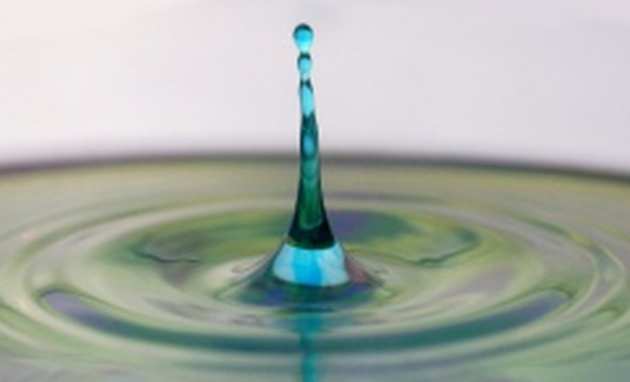 Stephen Davis visited us in the period Oct 4 - Nov 4, 2014. He was supported by a Royal Academy of Engineering Distinguished Visiting Fellowship through our group and a Nelder Visiting Fellowship Award from the Mathematics Department. His visit was accompanied by four weakly seminars, a four part exploration of Fluid Dynamics across scales, held in Chemical Engineering, IC. The format was informal and the presentations were not of completed and submitted work, but rather of ongoing or developing ideas that can benefit from input from people with different expertise.
Stephen Davis visited us in the period Oct 4 - Nov 4, 2014. He was supported by a Royal Academy of Engineering Distinguished Visiting Fellowship through our group and a Nelder Visiting Fellowship Award from the Mathematics Department. His visit was accompanied by four weakly seminars, a four part exploration of Fluid Dynamics across scales, held in Chemical Engineering, IC. The format was informal and the presentations were not of completed and submitted work, but rather of ongoing or developing ideas that can benefit from input from people with different expertise.
- Prof. Steve Davis, Northwestern University: Open problems and challenges in surfactant laden drops moving on substrates.
- Dr. Ory Schnitzer, Mathematics, IC: Problems in electrohydrodynamics.
- Dr. Prasun Ray, Mathematics, IC: Instabilities in polymeric shear flows.
- Dr. Peter Yatsyshin, Chemical Engineering, IC: Microscopic approach to surface tension.
- Mr. Andreas Nold, Chemical Engineering, IC: Nanoscale fluid structure in the vicinity of a contact line.
- Dr. Thibault Dairay, Aeronautics, IC: Direct numerical simulation of a turbulent wake generated by an irregular object.
- Dr. Alice Thompson, Mathematics, IC: Mathematical problems in electrostatically induced patterning with applications in soft lithography.
July 2014
 Prof. Eugenia Corvera Poiré, Facultad de Química, UNAM, Ciudad Universitaria, México. The purpose of Eugenia´s visit was related to the project: “Mapping surface roughness into chemical patterning”.
Prof. Eugenia Corvera Poiré, Facultad de Química, UNAM, Ciudad Universitaria, México. The purpose of Eugenia´s visit was related to the project: “Mapping surface roughness into chemical patterning”.
June 2014
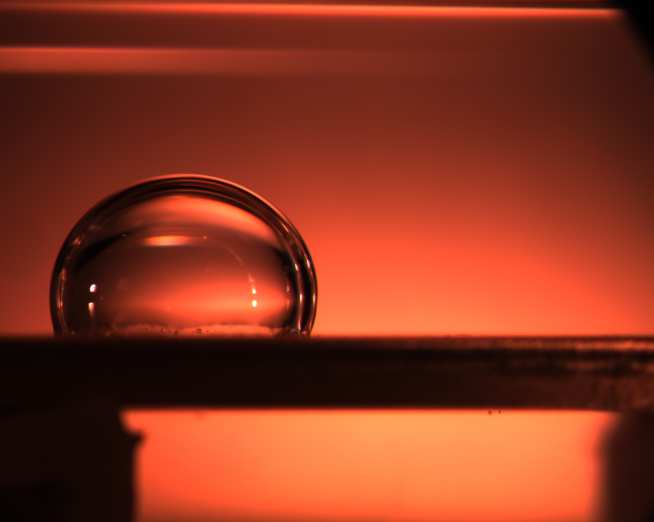
Paul Steen, School of Chemical and Biomolecular Engineering, Cornell University. Paul visited and gave two talks. Firstly a research seminar entitled "Sessile Rayleigh Drops".
Secondly, a masterclass emphasising applied mathematics and its benefits entitled "Stability of Constrained Capillary Surfaces".
May 2014
 Dr. Hiroshi Gotonda, Department of Mechanical Engineering, Ritsumeikan University, Kyoto, Japan during his visit. Currently, Tokyo University of Science, Tokyo, Japan. The purpose of Hiroshi's visit was related to the project: “Nonlinear forecasting of the (generalized) Kuramoto-Sivashinsky equation”.
Dr. Hiroshi Gotonda, Department of Mechanical Engineering, Ritsumeikan University, Kyoto, Japan during his visit. Currently, Tokyo University of Science, Tokyo, Japan. The purpose of Hiroshi's visit was related to the project: “Nonlinear forecasting of the (generalized) Kuramoto-Sivashinsky equation”.
February 2014
 Jacco Snoeijer, Physics of Fluids group, University of Twente & TU Eindhoven. Jacco visited and gave us a talk entitled "Coalescence of drops on a substrate".
Jacco Snoeijer, Physics of Fluids group, University of Twente & TU Eindhoven. Jacco visited and gave us a talk entitled "Coalescence of drops on a substrate".
2012
October 2012
 Jim Lutsko, Center for Nonlinear Phenomena and Complex Systems Université Libre de Bruxelles. Jim gave us a talk entitled "A dynamical theory of nucleation".
Jim Lutsko, Center for Nonlinear Phenomena and Complex Systems Université Libre de Bruxelles. Jim gave us a talk entitled "A dynamical theory of nucleation".
2011
May 2011
Andreas Acrivos, Emeritus Professor, City College of CUNY, New York. Andreas gave the vote of thanks for Professor Kalliadasis' inaugural lecture.
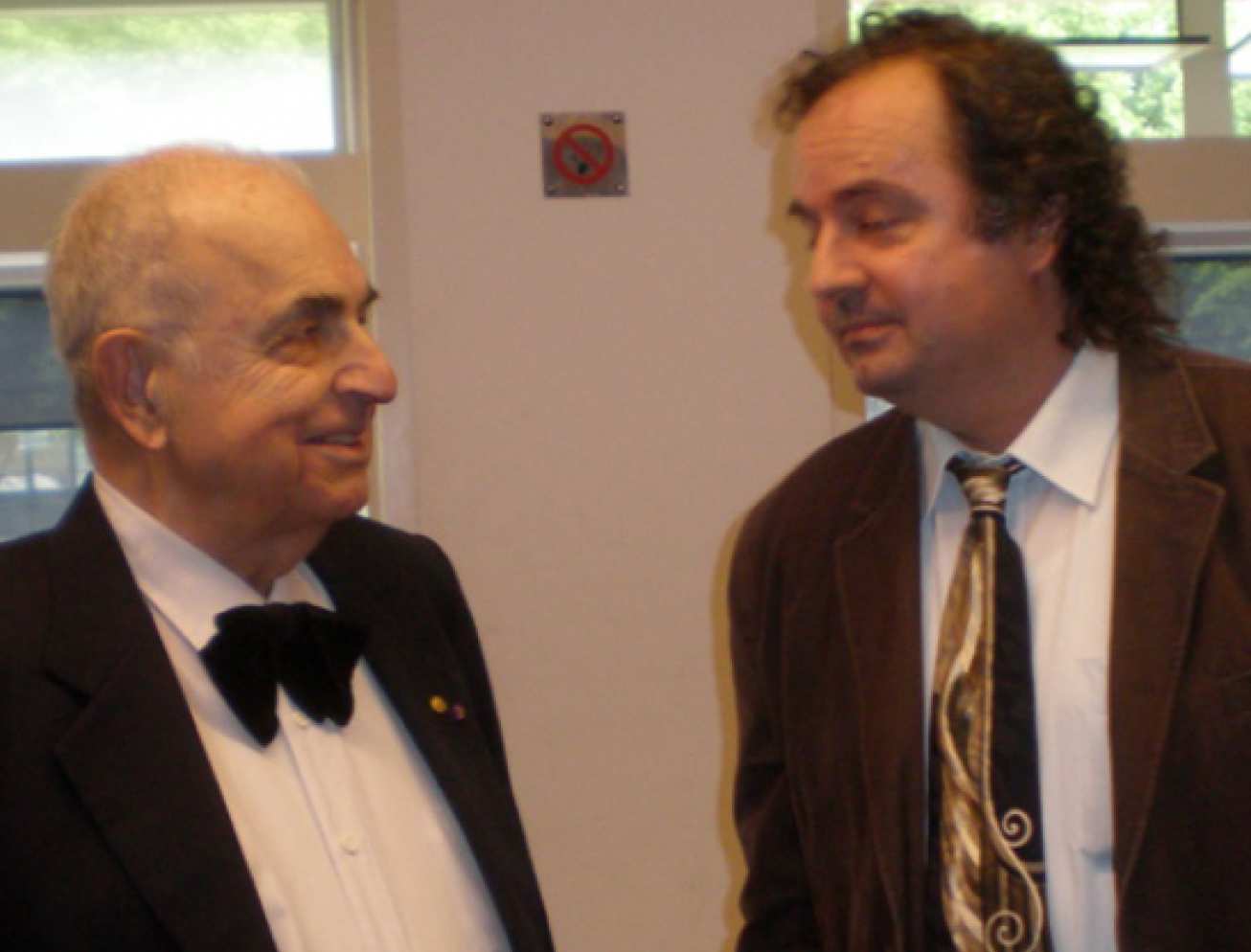
March 2011
 Julia Yeomans, Rudolf Peierls Centre for Theoretical Physics, University of Oxford. Julia gave us a talk entitled "Modelling drops on micropatterned surfaces".
Julia Yeomans, Rudolf Peierls Centre for Theoretical Physics, University of Oxford. Julia gave us a talk entitled "Modelling drops on micropatterned surfaces".
Januray-June 2011
 Dr. Fabio Bozzoli, Department of Engineering and Architecture, Università di Parma, Italy. The purpose of Fabio's visit was related to the project: “Experimental investigation of wetting of imperfect surfaces”.
Dr. Fabio Bozzoli, Department of Engineering and Architecture, Università di Parma, Italy. The purpose of Fabio's visit was related to the project: “Experimental investigation of wetting of imperfect surfaces”.


